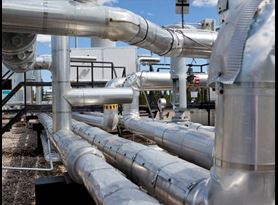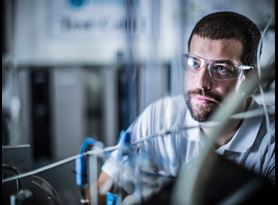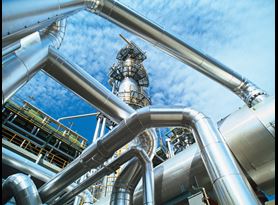Introduction to ATEX Certification

By Engaged Expert
Stephen TaitStephen Tait has over 19 years' experience in testing and certification of telecoms products
In the complex world of achieving ATEX certification, it can be easy to get stuck in the intricacies of such projects and overlook the fundamentals. Save yourself time and money by answering two simple questions - what can be certified to ATEX & IECEx, and what standards apply to specific products?
When designing and manufacturing your products, it is critical that you familiarize yourself with the relevant standards as this will help avoid any failures when it comes to testing later in the process.
In the European Union, all equipment with a potential ignition source (electrical or mechanical) including protective systems, must meet ATEX requirements for the health and safety of workers employed in hazardous atmosphere installations. Such environments include work areas that contain flammable gases, mists or vapors, or combustible dusts.
Manufacturers that apply the Ex marking can sell their products anywhere within the EU without any further requirements concerning the risks covered being applied.
Element’s ATEX and IECEx testing and certification experts provide you with advice on which products need to be certified under ATEX, or IEC, and to meet any other relevant standards. We can help you create a single test certification program that accommodates any additional testing. We can help you create a single test certification program that accommodates any additional testing.
What is ATEX certification?
ATEX Certification is a product regulation which ensures the safety of equipment intended for use in potentially explosive atmospheres in the European Union. Certifying your products to ATEX helps improve the safety and protect the health of workers potentially at risk from explosive environments such as those found in the petrochemical industries, underground mining or food production.
What is the difference between IECEx and ATEX?
IECEx certification is a worldwide scheme based on compliance with IEC standards that facilities international trade while ATEX is a mandatory scheme based upon compliance with specified essential requirements within the EU.
What is EN 60079 and how does it relate to ATEX certification?
The EN 60079 series of standards were put in place to test electrical equipment and assemblies that pose an ignition risk going into potential explosive atmospheres, with specific standards relating to specific protection concepts. Read more here.
What are the protection concepts and the ATEX Zone?
The protection concepts are defined methods and approaches that manufacturers apply as part of their special precautions to reduce the likelihood of ignition being present to an acceptable level. ATEX Zones are the dangerous areas used for classification between environments with different levels of danger.
The protection concepts and ATEX Zones that your products should be tested to are determined by yourself or driven by the market.
Do all materials in ATEX Zones need to be ATEX certified?
ATEX certification requirements vary depending on the category of equipment and the zones of the equipment’s intended use.
We perform ATEX testing on materials, such as air powered drills or turbine assemblies that are going into an ATEX Zone and can potentially generate and store a static charge. These tests give you confidence in the materials used and the pace of mind. However, as they pose no actual ignition risk in themselves, the products cannot be ATEX certified. For example, with a plastic bucket, although there could be a small buildup of static, the bucket in itself cannot cause a spark or discharge and therefore would not be a risk.
How do I certify non-electrical equipment for use in explosive atmospheres?
All non-electrical equipment that poses an ignition risk needs to be covered by the ATEX Directive and will refer to standards EN 80079-36:2016 and EN 80079-37:2016. Typical non‐electrical equipment which may present a potential danger include motors, gear units, air powered drills, turbine assemblies valves, and rollers.
We highly recommended that you design non-electrical products in line with these standards to avoid serious difficulties trying to amend and alter a product after prototypes have been finalized. Read more here.
How do I certify an ATEX product that I have not manufactured?
When certifying a product over which you have no design control, it is essential to find out whether the product or material that it’s made of has been altered in the design process. If this is the case, manufacturers must confirm that any alterations made fall within the limitations of the standards that a product had initially been certified to. Even then, you may still require to perform an amount of additional testing. Because of this, certifying a product bought off the shelf from another company is extremely difficult and verges on impossible if you do not have a close working relationship with them.
If in doubt and you’d like to discuss your ATEX and IECEx requirements in more details, contact us today. Our Engaged Experts are ready to guide you through our capabilities and highlight if there may be any barriers to certifying your ATEX product.
Find related Resources

IECEx
Element offers IECEx services including the capability to test and certify equipment, which enables it to be sold in any IECEx participating countries.

ATEX Certification & the ATEX Directive
Element offers ATEX Certification and breadth of technical expertise as a European Notified Body (NB) for the ATEX Directive 2014/34/EU.

IECEx Certification
Element offers IECEx services including the capability to test and certify equipment, which enables it to be sold in any IECEx participating countries.

ATEX and IECEx Certification of non-electrical equipment
Element helps you understand ATEX and IECEx Certification of non-electrical equipment, ATEX categories and the compliance route to construct a certification test program.

